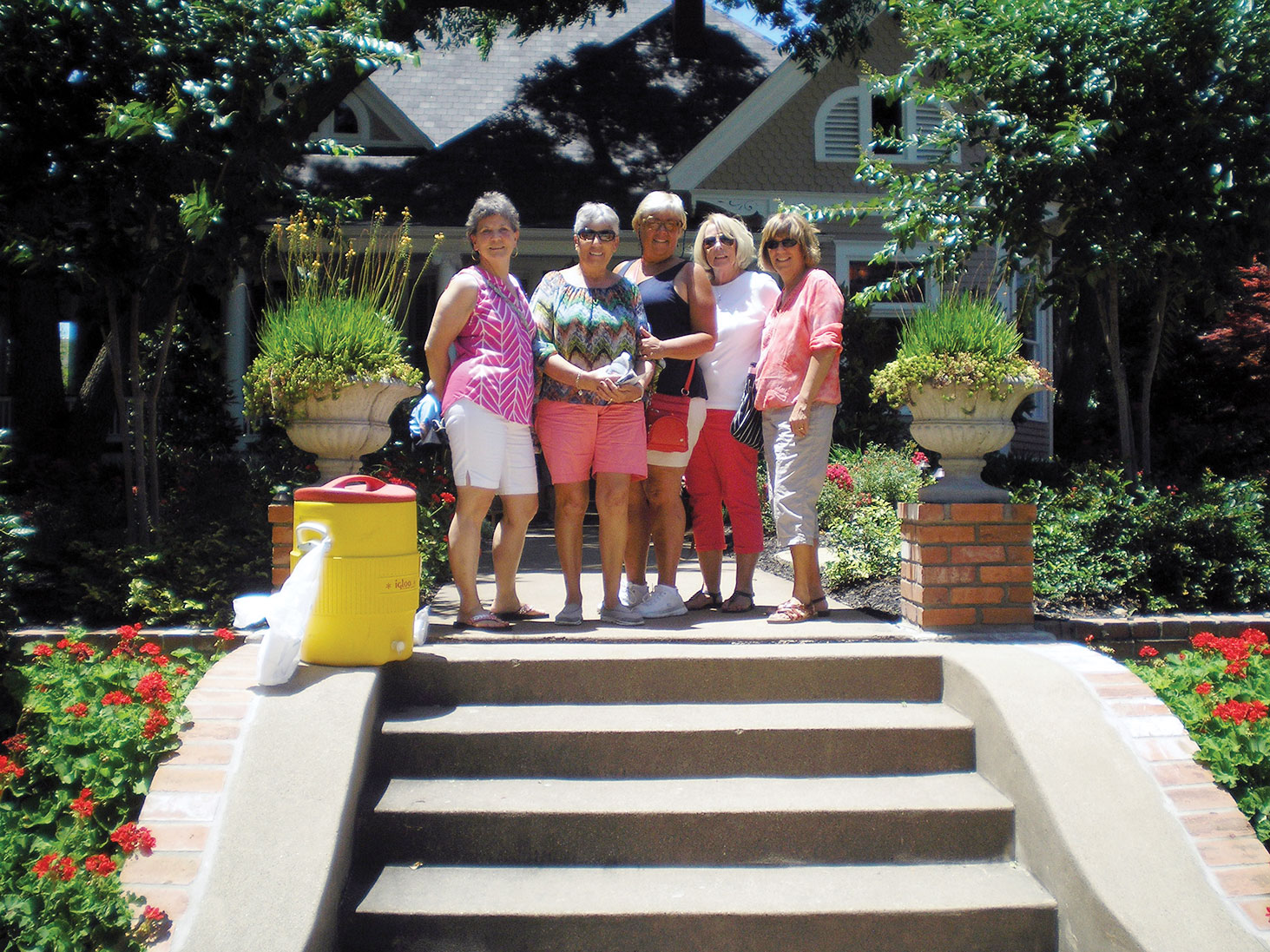
Girls on Wheels capture Waxahachie’s storybook charm.
Vicki Baker
Driving around the city of Waxahachie it is evident it is steeped in history. Before the turn of the century and well into the 1920s when “cotton was king,” Waxahachie was one of the wealthiest and most influential cities in Texas. Once at the center of the cotton boom, large landowners made millions of dollars. Then entrepreneurs came to these communities, setting up trades catering to these wealthy farmers. They, in turn, also became wealthy. Nowhere is the wealth more obvious than in the beautiful and majestic homes that line the city streets.
When the bottom fell out of the cotton market in 1930, the millionaires moved away and Waxahachie fell into a deep sleep. For many years not much went on in the city, and no development happened. More prosperous areas were experiencing growth and tearing down the old to make way for the new. But not in Waxahachie. As it turns out this was a blessing in disguise. Townspeople realized the value of the many historic structures, and with a strong preservation ethic they saved and maintained many historical properties. Thus the first Gingerbread Trail Tour of Homes became a reality in 1969, and the rest as they say is history.
Girls on Wheels returned to the days of yesteryear for the 48th annual Gingerbread Home Tour during our June outing. Nicknamed the “Gingerbread City,” the homes date from the late 1880s spanning a variety of architectural styles including Victorian style with gingerbread carpentry, the most popular architectural style, as well as combinations of Queen Ann, Classic Renaissance and Roman Doric Revival. Waxahachie opened the doors to the city’s architectural history with a tour of five privately owned homes built between 1885 and 1935, which showcased some of the most dramatic restoration and renovation projects around.
Because the city tends to hang onto its historic buildings, some of its “past residents” like to stick around too. Among the spooky destinations were the 1915 Burleson House, home to Burleson honey, and the Cajun-influenced eatery, Catfish Plantation, which proudly goes by the moniker “most haunted restaurant in Texas.”
Tucked just a few blocks from the downtown square is the best catfish restaurant you’ll find in a haunted house anywhere. The Catfish Plantation resides in a converted, quaint Victorian house built in 1895. During our visit we didn’t see any spirits, experience any cold spots or witness any supernatural phenomena. But it was a fun place to explore, and the food was outstanding with flavorful catfish and hush puppies done to perfection.
Our tour offered us a peek into the past with an up-close-and-personal look at historically recognized homes. But we had to leave the past behind and return to the present, always looking forward to the next outing spent with girlfriends because “behind every successful woman is a friend giving her crazy ideas!”
